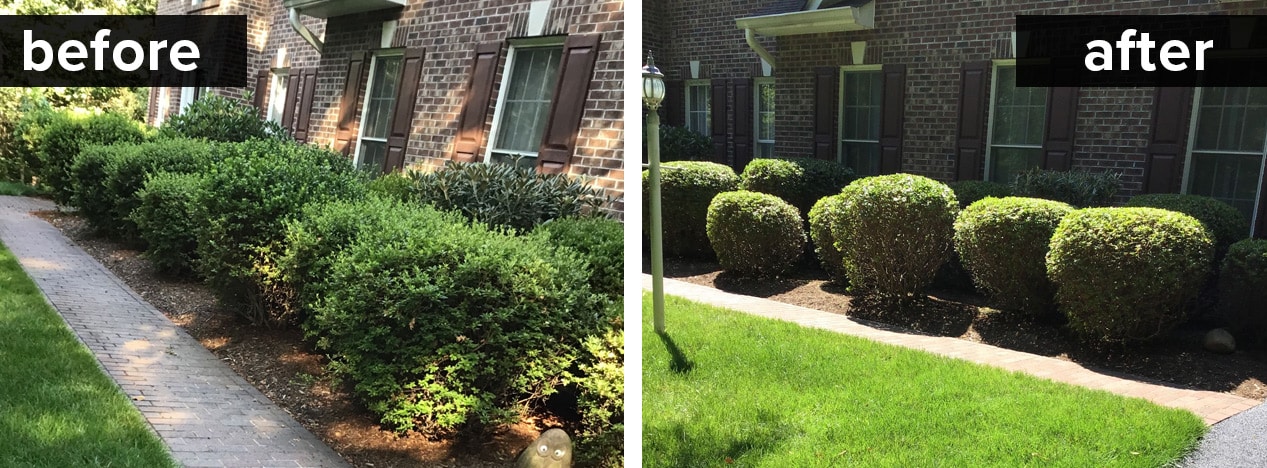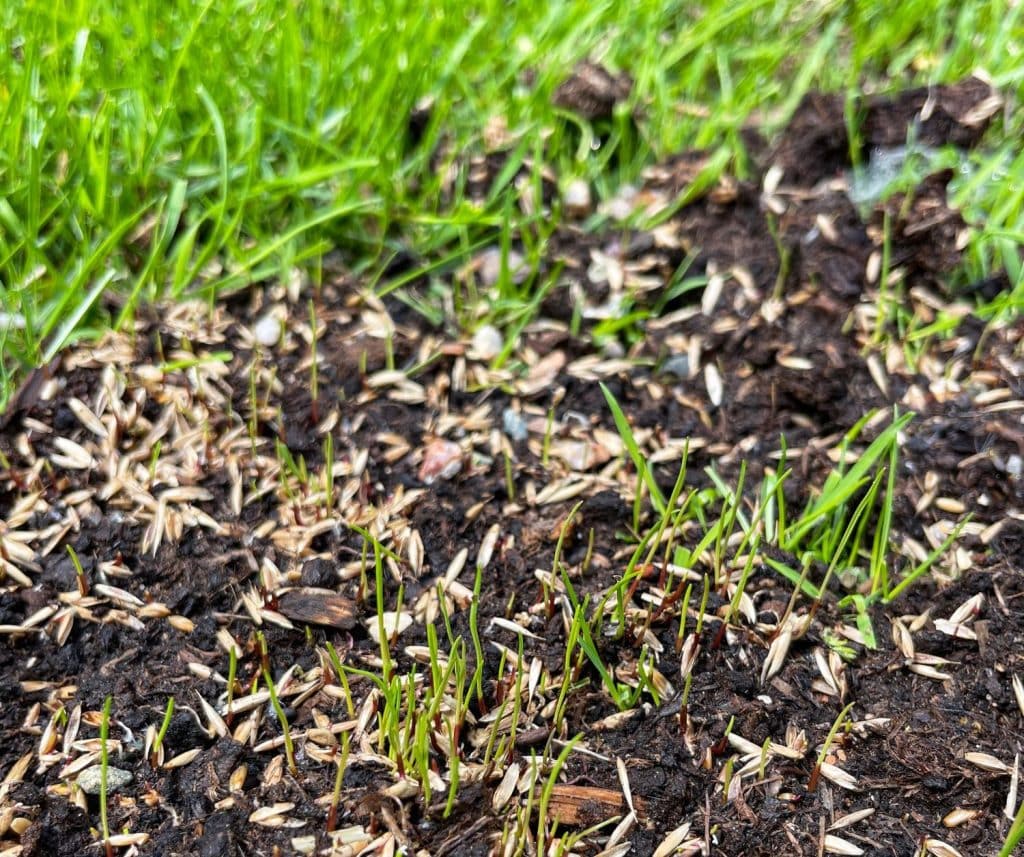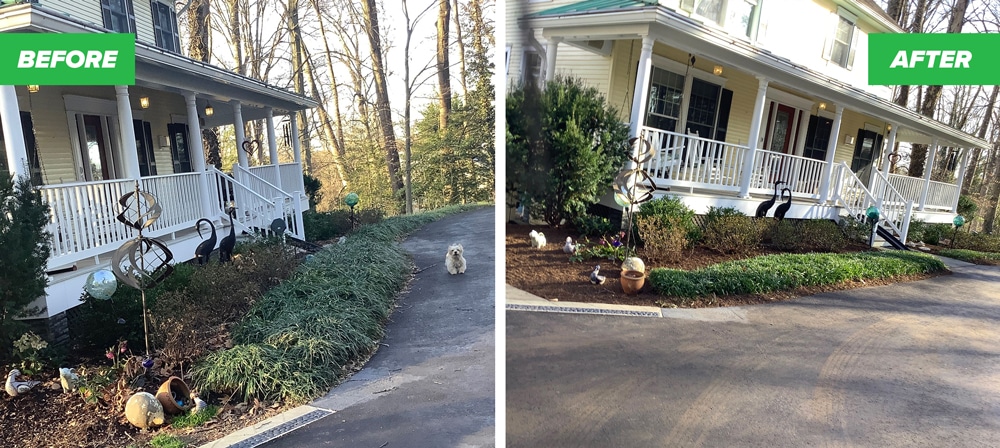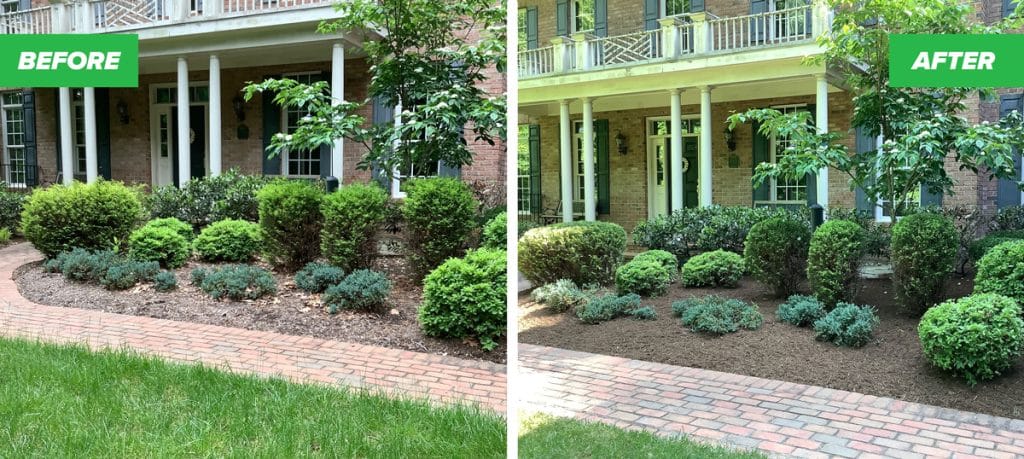Summer is here, and it’s time to get your pruning shears out and get to work! With gorgeous summer blooms come outdoor parties—and you don’t want to miss the warm sun on your skin and spruced-up vibrant colors in your landscape. Although pruning in the summer can seem counterintuitive, especially in the hot and humid weather of Northern Virginia, it’s vital for the health and happiness of your plants. It can save money in the long run by preventing disease, pests, and safety hazards. Also, now is the time to strengthen the plants for the fall and winter. Ready to unleash your inner pruning maestro? Let’s dive in!
First, let’s clarify the difference between summer and winter pruning. Winter pruning is done when the tree is dormant, typically between December to March. The pruning focuses on the shape and structure of the tree. On the other hand, summer pruning occurs during the growing season, typically from June to September, and is focused on maintaining the health and vigor of the tree by removing dead, diseased, or damaged branches.

Now, let’s talk about the specific techniques for summer pruning. When pruning in the summer, it’s essential to avoid cutting too much off at once, as this can stress out the tree and make it more susceptible to disease or pest infestation. Instead, focus on removing smaller sections of dead or diseased wood or thinning out overcrowded branches to allow for better airflow and light penetration.
It’s also important to make clean cuts at the correct angle, ideally just outside the branch collar, which is the area at the branch’s base where it connects to the trunk (45-degree cut.) This technique helps the tree heal properly and prevents any unnecessary damage. Use sharp pruning shears or saws to make a clean cut, minimizing the chances of injuring the tree.
Finally, always remember safety when pruning, especially in the summer heat. Wear protective gear like gloves, long sleeves, and eye goggles to prevent injury from falling branches or debris. And stay hydrated! If you need more clarification about the best techniques for pruning your trees, feel free to hire a professional arborist who can give you expert advice and guidance.
Top 8 Summer Pruning Tips
- Deadheading. Deadheading is the removal of passed blooms from plants. When you remove the faded flowers, you encourage the plants to produce more flowers. This technique is particularly effective for vivacious perennials and annuals such as zinnias, asters, and roses. A diligent deadheading practice also helps prevent plant diseases by removing potential infection sites.
- Pruning water sprouts. Water sprouts are the shoots that grow directly from the base or underside of tree limbs. While they are natural, they tend to weaken the trees and eventually become a nuisance. During summer, you can cut off the water sprouts to prevent them from consuming the energy the tree sends to the remaining branches.
- The right time to prune. In the lawn and landscape world, timing is crucial! For example, pruning can be hard on the plant. If you cut back some plants too late in summer, it might trigger new growth that will only be able to mature after the onset of winter. On the other hand, if you prune some plants too early in summer, they might need more time to close the wound and grow healthy new leaves. So be aware of what part of your shrub’s blooming cycle is in before taking action.
- Pruning To Manage Size. Pruning is the ultimate (not-so-secret) secret to keeping your plants at the perfect size. Not only does it prevent them from getting out of control, but it also makes them even more beautiful and whole. But here’s the thing, not every plant plays by the same pruning rules. Pruning is an excellent way to control the growth of plants to prevent them from becoming too large. For some trees and shrubs, pruning can also help make them bushier and fuller. When you prune, it’s important to understand that not every plant can follow the exact pruning instructions.
- Prune based on the plant’s growth habit. Plants Pruning starts with understanding the unique growth habits of plants. From elegant shrubs to majestic trees, each has its own distinct shape and pattern. Picture the whimsical branches of crabapples and magnolias beckoning your pruning shears. But hold on! Don’t just dive in blindly – first, grasp the significant branch points and overall structure. With this knowledge, you’ll confidently sculpt your leafy friends, ensuring their growth remains vibrant and enchanting. Knowing your plants is crucial to proper planting.
- Don’t prune newly planted trees. Pruning newly planted trees is a delicate matter. While it’s true that pruning can enhance growth and stability, being patient and allowing young trees to flourish is key. These sprightly newcomers require their foliage for photosynthesis and energy, nurturing their development into robust, firmly-rooted plants for the seasons ahead. So, please resist the urge to trim and let nature work its magic as your leafy companions establish their roots and prepare for a verdant future. Trust the process, and watch in awe as nature unveils its captivating masterpiece.
- Prune in dry conditions. Are you looking to protect your plants from bothersome bugs and diseases? Skip the wet weather when it’s time to prune! Moisture breeds unsightly fungal infections and creepy crawlies that can wreak havoc on your lovely foliage. Dry pruning is the key to nurturing a healthy, thriving garden. So seize your trusty tools and get ready for some good ol’ neighborly plant TLC. With dry pruning, your garden will flourish like never before, and the results will leave you grinning from leaf to leaf!
- Proper Pruning Tools. Proper pruning is about using the correct techniques and tools to do the job efficiently. Sharpened and clean tools make it easier to prune and minimize wound size. Good pruning tools for your toolshed include pruning saws, lopping shears, hand pruners, and hedge shears. Be sure to cut the branches at a 45-degree angle above healthy buds. And if you’re trimming diseased plants, you have to sterilize your pruning equipment with a water/bleach mixture in between cuts to prevent the spread of disease. Mix ⅓ bleach to ⅔ water. You must thoroughly wash your tools in water and dried before using pruners again. Why? Because bleach will kill your shrubs–so make sure you’ve cleaned your tools completely.
Whew! Summer pruning can seem daunting, but following our tips above and speaking with an expert at your local plant nursery, you can better position your plants for a successful fall and winter. It is essential for the health and happiness of your plants, especially how humid and hot our area can get. Whether you’re dealing with slumping roses, youthful crabapples, or overflowing asters, now you know how to address their needs. So, what are you waiting for? Grab your pruning sheers and indulge in some summer pruning this season.
Happy gardening!








